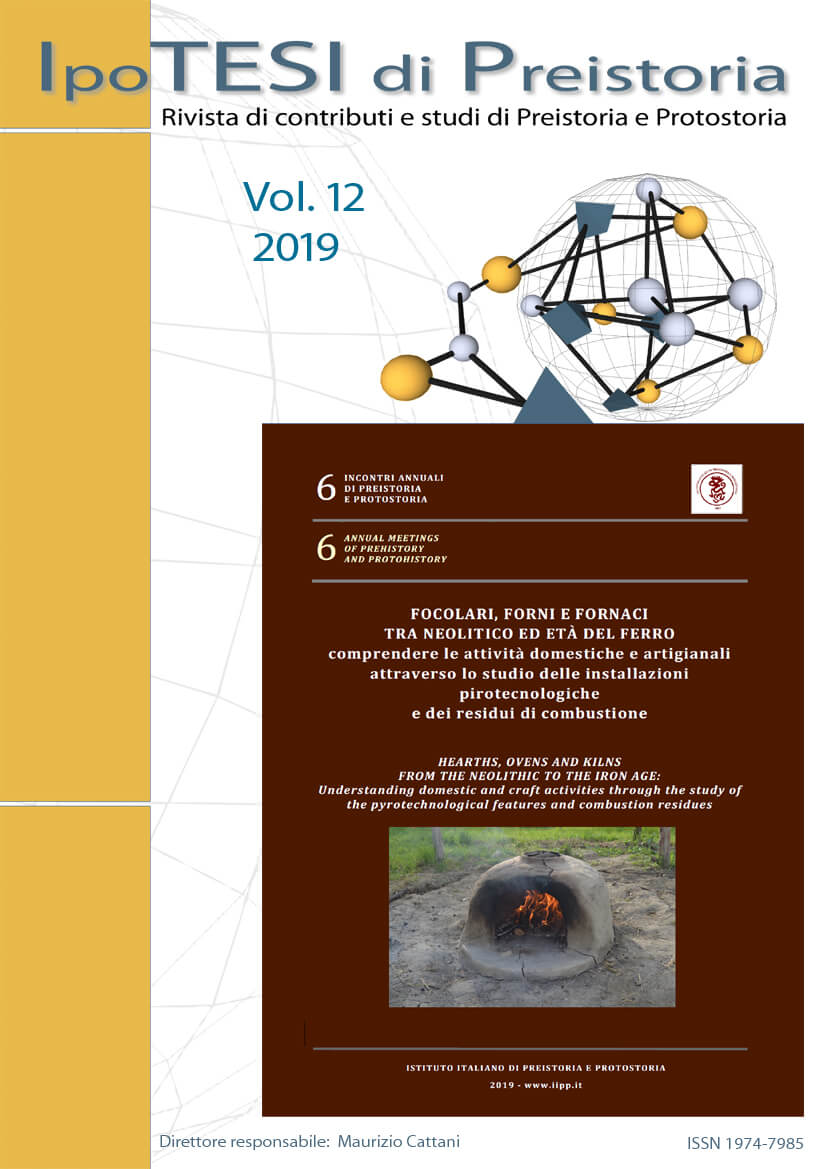Ritual combustion pits at the Campi Neri of Cles sanctuary (Valle di Non – Trentino)
DOI:
https://doi.org/10.6092/issn.1974-7985/10306Keywords:
Bronze Age, Luco Culture, place of worship, votive offering, polynesian ovenAbstract
The Campi Neri of Cles (Valle di Non - Trentino) sanctuary extending over 7.000 square meters, has enabled the identification of an articulated sequence of ritual practices at all stages characterized by the presence of path routes of sacred nature. The earliest phase corresponds to a structure in a circular structure of about 8.5 meters in diameter dating to a period between the late Copper Age and the so-called formative or initial phase of the Early Bronze Age. Near this structure lighting fires within shallow circular pits filled with stones has been documented from the Early Bronze Age. In these combustion pits are calcined bones and unaltered animal bones. In the entire area that was studied, almost 220 of these circular pits were noted with an average diameter of 95 cm tightly packed in well-defined nuclei. Some oldest pits dated back to the Middle Bronze Age and contained cremated human bones. To the Luco/Laugen culture are related 141 pit structures. The most immediate interpretation seen in these fires is the so-called “Polynesian ovens”: a definition of ethnographic origin that regardless of its “exotic” character, indicates the particular preparation for the cooking of animal meat.Downloads
Published
2019-12-31
How to Cite
Marzatico, F., Degasperi, N., & Endrizzi, L. (2019). Ritual combustion pits at the Campi Neri of Cles sanctuary (Valle di Non – Trentino). IpoTesi Di Preistoria, 12(1), 197–214. https://doi.org/10.6092/issn.1974-7985/10306
Issue
Section
Conference papers
License
Copyright (c) 2019 Franco Marzatico, Nicola Degasperi, Lorenza Endrizzi
Copyright for articles published in this journal is retained by the authors, with first publication rights granted to the journal. The authors agree when submitting their work that it can be copied by anyone for noncommercial purposes but only if proper credit is given. Thus by virtue of their appearance in this open access journal, the articles have been declared free to use, with proper attribution, in noncommercial settings. All authors are responsible for the content of their work, including proper citation, attribution and usage permissions.
This journal is licensed under a Creative Commons Attribution NonCommercial 4.0 International License.
See also our Open Access Policy.
See also our Open Access Policy.





